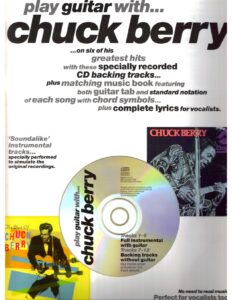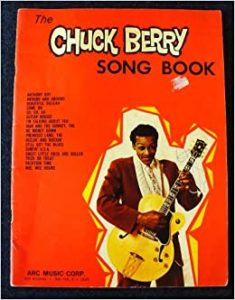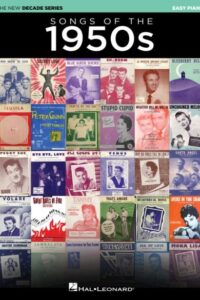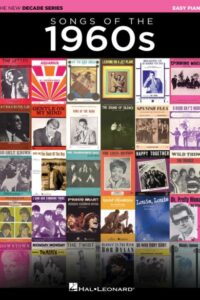Come join us now, and enjoy playing your beloved music and browse through great scores of every level and styles!
Can’t find the songbook you’re looking for? Please, email us at: sheetmusiclibrarypdf@gmail.com We’d like to help you!
Table of Contents

Best Sheet Music download from our Library.
Remembering Chuck Berry, born on this day in 1926 (1926-2017).
Hail, Hail, Rock and Roll! Celebrating Chuck Berry, the Architect of Rock and Roll.
On October 18, 1926, in St. Louis, Missouri, a child was born who would one day define the very essence of a new musical revolution. His name was Charles Edward Anderson Berry, but the world would come to know him simply as Chuck Berry—the poet of post-war teenage life, the showman with the duck walk, and, most importantly, the undisputed Architect of Rock and Roll.

Please, subscribe to our Library.
If you are already a subscriber, please, check our NEW SCORES’ page every month for new sheet music. THANK YOU!
While no single person can claim to have invented rock and roll alone, Chuck Berry synthesized its core components more perfectly and potently than anyone before him. He was the catalyst, the one who drew up the blueprint that generations of musicians would follow.
The Biography: From St. Louis to Stardom
Berry’s early life was a mix of music and mischief. He grew up in a middle-class, Baptist family in St. Louis, where he was first exposed to music in the church. However, his youth was troubled; a joyriding incident with a stolen car led to a conviction and three years in a reformatory from 1944 to 1947.

Browse in the Library:
Or browse in the categories menus & download the Library Catalog PDF:
After his release, he married, worked at an auto plant, and trained as a hairdresser. But music was his calling. He polished his guitar chops and showmanship with local bands, blending his love for blues (Muddy Waters), country (Bob Wills), and the jump blues of Louis Jordan.
His big break came in 1955. On a trip to Chicago, he met his idol, Muddy Waters, who pointed him toward Leonard Chess of Chess Records. Berry initially thought his blues number “Ida Red” would be his ticket, but Chess was captivated by Berry’s upbeat, country-tinged number “Maybellene.” With a new title (inspired by a mascara box) and a driving rhythm, the song was released. It became a massive crossover hit, reaching #1 on the Billboard R&B chart and #5 on the Pop chart, breaking down racial barriers in the nascent world of rock and roll.
The late 1950s were a golden age for Berry, producing an unparalleled string of iconic hits. However, his career was nearly derailed in 1962 when he was convicted under the Mann Act for transporting a minor across state lines. He served 20 months in prison, a period that halted his meteoric rise and left him embittered.

He made a triumphant comeback in the mid-60s with hits like “Nadine” and “No Particular Place to Go,” but the landscape had changed. The British Invasion, led by bands who had learned their craft by covering his songs, now dominated. Berry became a relentless touring machine, often working with pickup bands, a pragmatic if sometimes contentious business decision. His legacy was cemented, and he continued to perform for decades, receiving a Grammy Lifetime Achievement Award and being among the first inductees into the Rock and Roll Hall of Fame. Chuck Berry passed away on March 18, 2017, but his music remains eternally alive.
Musical Style and Harmony: The Blueprint for a Revolution
Chuck Berry’s genius lay in his synthesis. He didn’t just play one style; he fused them into something new and electrifying.
- Guitar as a Lead Voice: Before Berry, the guitar was often a rhythm instrument. Berry made it the star. His opening riff to “Johnny B. Goode” is the most famous guitar lick in history. His style was built on double-stop licks (playing two strings simultaneously) and bright, shimmering solos that were both melodic and rhythmically driving.
- Rhythm and Boogie Woogie: The foundation of Berry’s sound was a relentless, chugging rhythm guitar, often playing a blues shuffle or a boogie-woogie pattern adapted to the guitar. This created an irresistible, danceable energy.
- Harmonic Simplicity: Harmonically, Berry’s music was straightforward, almost exclusively based on the 12-bar blues progression (I-IV-V). He rarely strayed from this structure, but within it, he built a universe of rhythm, melody, and storytelling. His genius was in what he played over this simple foundation.
- The Lyrics: The Poet of Teen America: This is where Berry truly separated himself. While early rock and roll was often about simple love songs, Berry chronicled the entire teenage experience of 1950s America. His songs were vivid short stories about cars (“Maybellene,” “No Particular Place to Go”), school (“School Days”), young love (“Sweet Little Sixteen”), and the American dream (“Johnny B. Goode”). He was a master wordsmith, using clever rhymes, wit, and a narrative flair that was unprecedented in popular music.

Iconic Compositions
Chuck Berry’s songbook is the foundational curriculum of rock music. A partial list of his essential compositions includes:
- “Maybellene” (1955)
- “Roll Over Beethoven” (1956)
- “School Days” (1957)
- “Rock and Roll Music” (1957)
- “Sweet Little Sixteen” (1958)
- “Johnny B. Goode” (1958)
- “Carol” (1958)
- “Little Queenie” (1959)
- “Memphis, Tennessee” (1959)
- “Nadine (Is It You?)” (1964)
- “No Particular Place to Go” (1964)

Collaborations and Influence: The Teacher of a Generation
Chuck Berry’s most significant “collaborations” were often uncredited; they were the artists who covered his songs and internalized his style.

- The Beatles and The Rolling Stones: John Lennon famously said, “If you tried to give rock and roll another name, you might call it ‘Chuck Berry’.” The Beatles covered “Roll Over Beethoven” and “Rock and Roll Music,” while The Rolling Stones’ early sets were filled with Berry numbers like “Carol” and “Around and Around.” Keith Richards’ entire rhythmic guitar approach is deeply indebted to Berry.
- The Beach Boys: Brian Wilson adapted the melody and theme of “Sweet Little Sixteen” for the iconic “Surfin’ U.S.A.,” a move that initially led to a songwriting credit for Berry after legal action.
- Rock Icons: From Jimi Hendrix and The Who to Bruce Springsteen and AC/DC, the list of artists influenced by Berry’s guitar-driven song craft is endless.
- Formal Collaborations: Later in his career, he collaborated directly with other legends. His 1972 album The London Chuck Berry Sessions featured sessions with members of the British rock scene. Most notably, the 1986 documentary and concert film Hail! Hail! Rock ‘n’ Roll saw Keith Richards serve as musical director, assembling an all-star band including Eric Clapton, Robert Cray, and Etta James to celebrate Berry’s 60th birthday.
Success and Discography

Berry’s success was monumental. He scored over a dozen Top 40 hits on the Billboard Pop chart and was a consistent presence on the R&B charts. While his chart dominance waned after the 1960s, his influence only grew.
Key Albums in His Discography:
- After School Session (1957) – His debut album.
- One Dozen Berrys (1958)
- Chuck Berry Is on Top (1959) – Often considered his quintessential early album.
- Chuck Berry’s Greatest Hits (1964)
- St. Louis to Liverpool (1964)
- The London Chuck Berry Sessions (1972) – Featured his last major hit, the risqué live novelty song “My Ding-a-Ling.”
- Rockit (1979) – A well-regarded late-career album.
His final album, Chuck, announced on his 90th birthday in 2016 and released posthumously in 2017, was a testament to his enduring creativity, his first new studio album in 38 years.
Chuck Berry was more than a musician; he was a cultural force. He gave a voice and a soundtrack to a generation, crafting a musical language so powerful and pure that it remains the bedrock of popular music. As John Lennon said, he was the one who “made it all up.” And for that, we will forever say, “Hail, Hail, Chuck Berry!”
Browse in the Library:
Or browse in the categories menus & download the Library Catalog PDF:
Chuck Berry Greatest Hits
[00:00:00] – 01. R̲u̲̲n R̲u̲̲do̲̲lph R̲u̲̲n [00:02:57] – 02. S̲we̲̲e̲̲t L̲i̲̲ttle̲̲ S̲i̲̲xte̲̲e̲̲n [00:06:07] – 03. J̲o̲̲hnny B̲. G̲o̲̲o̲̲de̲̲ [00:08:47] – 04. R̲o̲̲ck A̲̲̲nd R̲o̲̲ll [00:11:43] – 05. L̲e̲̲t I̲̲̲t R̲o̲̲ck [00:14:00] – 06. M̲a̲̲ybe̲̲lle̲̲ne̲̲ [00:16:32] – 07. R̲o̲̲ll O̲̲̲ve̲̲r B̲e̲̲e̲̲tho̲̲ve̲̲n [00:18:58] – 08. S̲we̲̲e̲̲t L̲i̲̲ttle̲̲ S̲i̲̲xte̲̲e̲̲n
